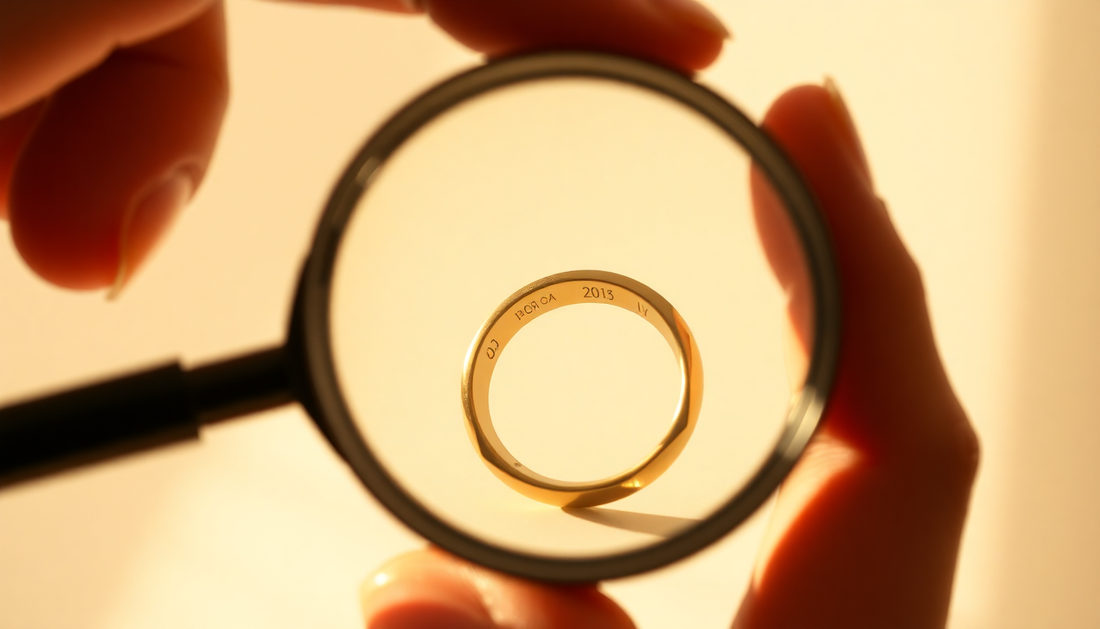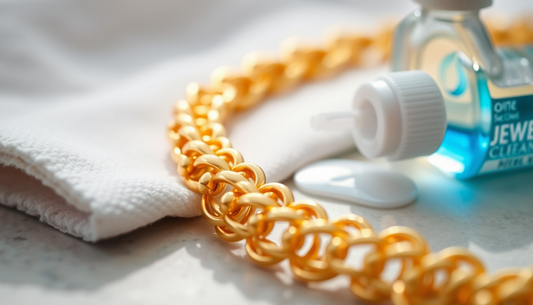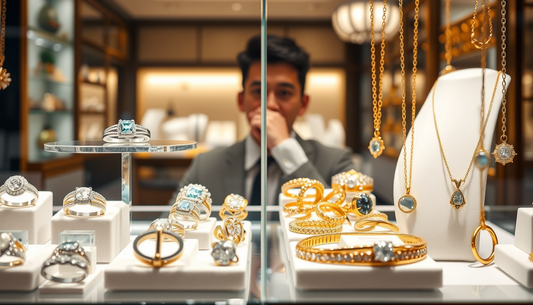
How to Identify if a Ring is Genuine Gold at Home
Share
Gold jewelry is a valuable and long-lasting investment, but sometimes it can be difficult to distinguish between genuine gold and imitations. Knowing how to check the authenticity of a gold ring at home can help you make informed decisions and avoid falling victim to fraud. In this blog, we'll explore simple and reliable methods to check if a ring is really gold, as well as key features to look out for.
The Importance of Identifying Genuine Gold
Owning authentic gold jewelry has numerous benefits. Firstly, gold is a precious metal that holds its value over time, making it a solid investment. Additionally, high-quality gold is more durable and resistant to wear, meaning your favorite jewelry will last longer. Finally, knowing that you are wearing genuine gold gives you peace of mind that you are purchasing a quality product and not a cheap imitation.
Simple Methods to Check if a Ring is Gold
There are several simple tests you can perform at home to determine if a ring is genuine gold. Some of the most common ones are:
Magnet Test
Gold is a non-magnetic metal, so if a magnet strongly attracts the ring, it is probably not pure gold. However, keep in mind that some metals used in gold alloys can also be slightly magnetic, so this test is not definitive.
Floatation Test
Place the ring in a glass of water. Gold, being a dense metal, will sink quickly, while lighter metals, such as copper or zinc, will float. This is an easy way to detect whether the ring contains genuine gold.
Brand Test
Look closely at the inside of the ring, where you'll usually find the manufacturer's stamp or mark. These stamps indicate the purity of the gold, such as 10K, 14K, or 18K. If you don't find any marks, the ring may not be gold.
Acid Test (with Precautions)
You can use a diluted nitric acid solution to test the authenticity of gold. Apply a small drop to an inconspicuous area of the ring. If the metal dissolves or changes color, it is probably not genuine gold. However, be very careful when handling acids, as they can be dangerous.
Physical Characteristics of Genuine Gold
In addition to the tests mentioned above, there are some physical characteristics that can help you identify authentic gold:
Color and Shine
Pure gold has a bright, uniform yellow color. If the ring has a paler, grayish or mottled tone, it may not be high-purity gold.
Weight and Density
Gold is a dense and heavy metal. If the ring feels too light for its size, it is probably not solid gold.
Malleability
Gold is a very malleable metal, meaning it can be bent and shaped without breaking. If the ring feels stiff or brittle, it may not be pure gold.
Homemade Tools for Verification
For more accurate testing, you can use some simple tools that you can find around your home:
- Magnifying glass or microscope: These will allow you to closely examine the details and markings on the ring.
- Precision scale: By weighing the ring, you can compare its density with that of gold.
- Gold Testing Kit: These kits typically include acid solutions and touchstones for more advanced analysis.
Warning Signs of Fake Gold
In addition to testing, you should also look out for some signs that may indicate the ring is not genuine gold:
Discoloration or Stains
If the ring becomes discolored, rusty, or tarnished, it is probably not pure gold.
Allergic Reactions
If the ring causes irritation or allergic reactions on your skin, it may contain low-quality metals.
Price Too Good to Be True
If the price of the ring appears to be excessively low compared to the market, this is a warning sign that it could be a fake.
How to Read Gold Purity Stamps
Gold purity stamps, such as 10K, 14K, or 18K, indicate the percentage of pure gold present in the alloy. The higher the karat number, the purer the gold. It is important to familiarize yourself with these stamps so you can identify the quality of the gold in your jewelry.
Common Myths and Mistakes When Verifying Gold
There are some popular beliefs about how to identify gold that can be misleading. For example, the tooth test or the fire test are not reliable methods and can damage the ring. It is important to be informed and avoid falling into these common mistakes.
When to Seek Professional Help
If you have any doubts about the authenticity of a high-value gold ring, it is advisable to go to a certified jeweler or a metal analysis laboratory. They will be able to perform more advanced tests and issue a certificate of authenticity.
Care and Maintenance of Gold Rings
Once you have verified that your ring is genuine gold, it is important to give it proper care and maintenance. Clean the ring regularly with a soft cloth and store it in a safe, dry place to preserve its shine and durability.
Conclusion
Identifying whether a ring is real gold at home is possible with a few simple methods and basic tools. Remember to look out for gold's physical characteristics, purity marks, and warning signs of imitations. Armed with this knowledge, you'll be able to make safer jewelry purchases and enjoy your gold pieces with the peace of mind of knowing they're genuine. Now you're ready to become an expert at authenticating gold at home!



